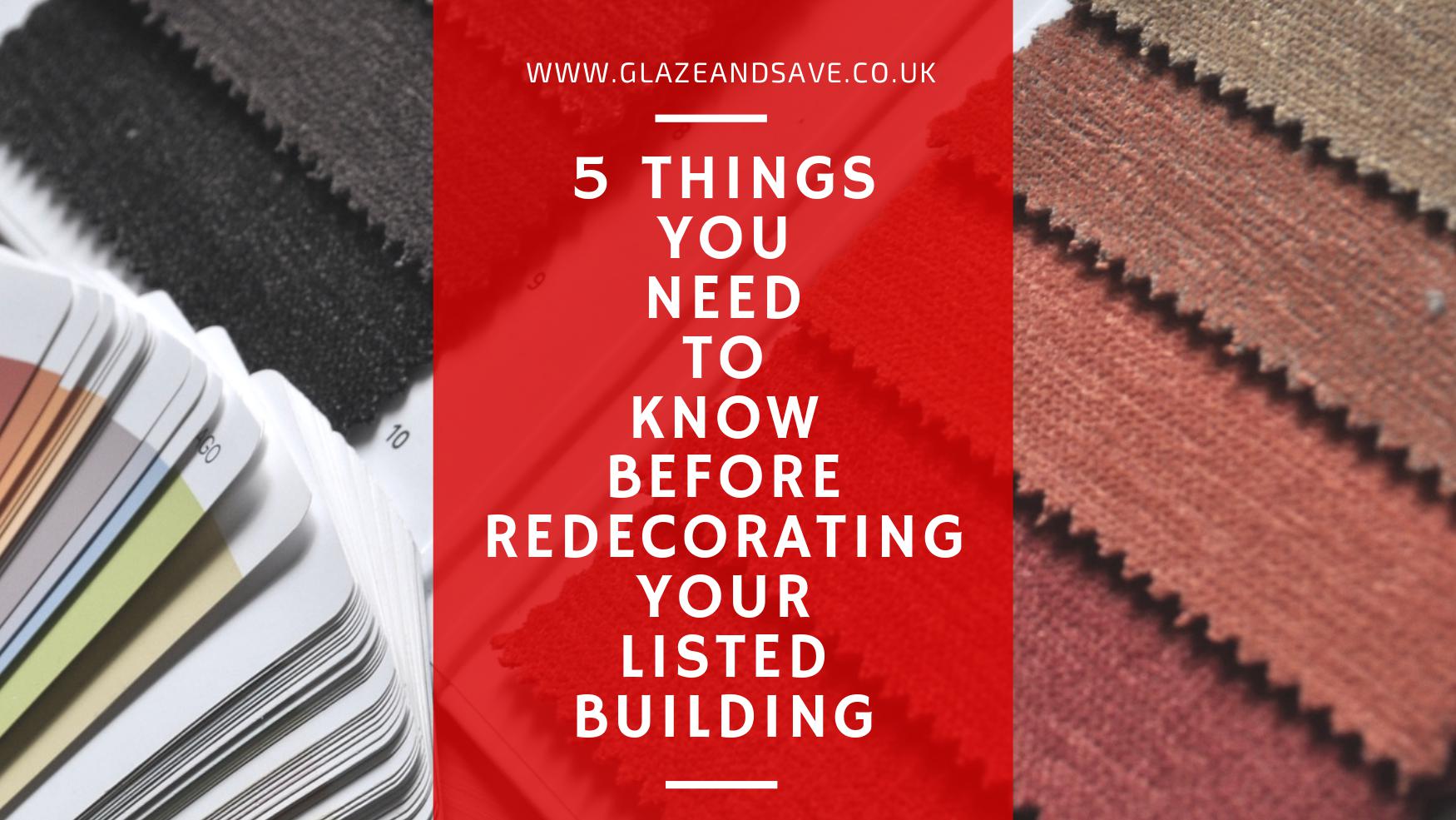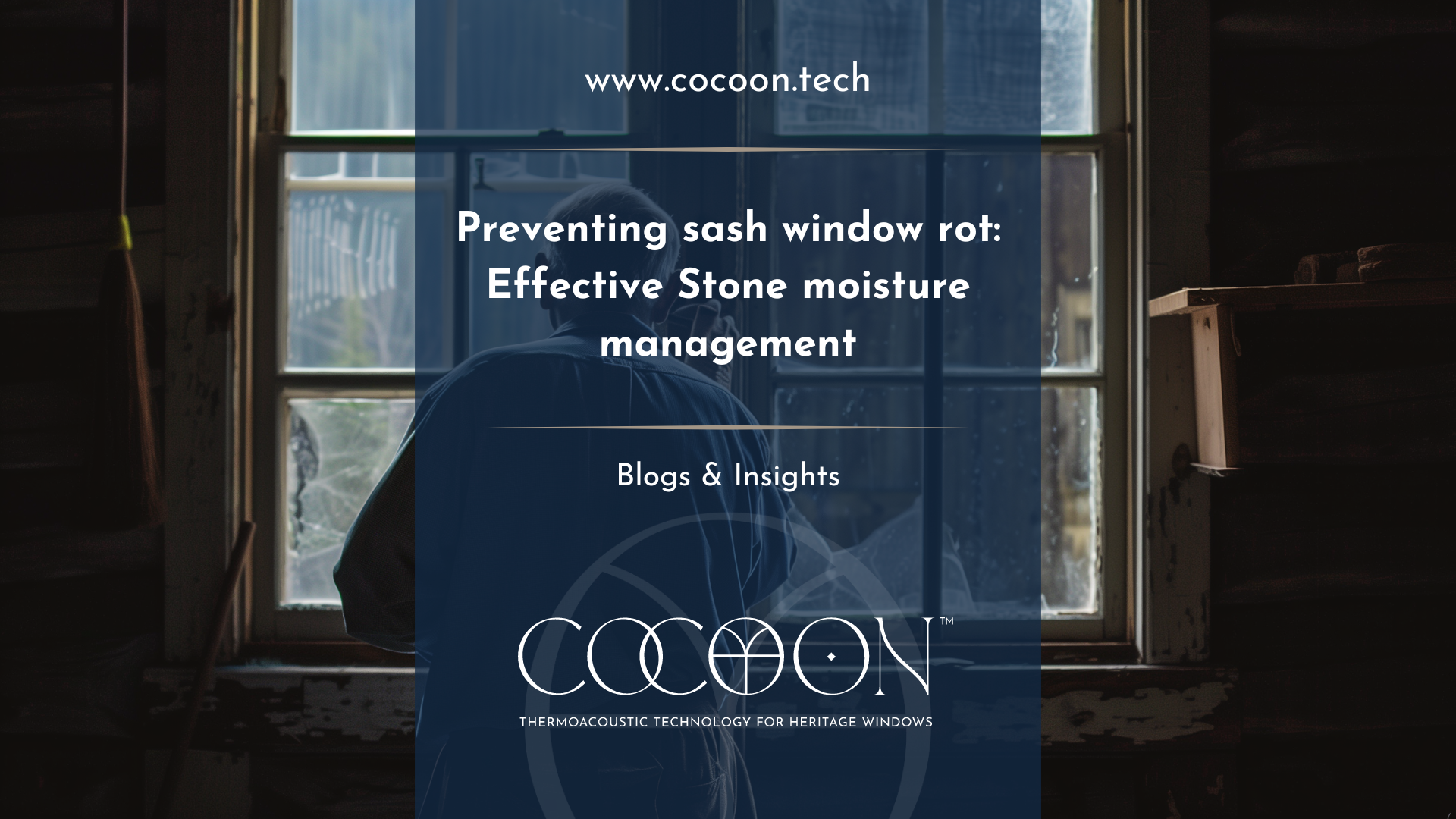Redecorating your Listed Building | Glaze & Save
One of the joys of home ownership is the ability to really
put your own stamp on your property, and in most cases, if you wanted to paint
every surface of your home’s exterior neon pink, or turn your property into a
replica of the palace of Versailles, you’d be bang to rights. Unfortunately,
there is no such freedom for listed property owners, and frustratingly, it can
feel like even carrying out a simple paint job can be fraught with bureaucracy.
That’s why we thought we’d put together this list of five things you really
should know before redecorating your listed building, to make sure you get it
right first time with minimal hassle.
1. You May Need Permission for External Painting
Semi-regular external paint jobs are important, particularly for listed buildings, as they help prevent decay. This is particularly true of external woodwork. However, if you have designs on painting the exterior of your listed property in a different shade to its current state, you may well need consent. According to Historic England:
“If your house is listed you may need to get permission for external redecoration if this would change the character of the building, for example by painting outside walls if they have never been painted before, or using bright red! In some conservation areas there may be special controls on the colours you can use, so check with your local authority first. If your house is in a terrace there may be a tradition of using different bright colours, or for all houses to match; it’s a good idea to take account of local approaches.
2. Although the Rules May Be More Relaxed for Painted Properties
Whether or not planning permission is required to repaint the exterior of a listed building that has already been painted is something of a grey area. Listed Building Consent may be required, but, as stated in BuildingConservation.com;
“In many cases the colour of the paint may be less important than the first application of an unsuitable covering which could be damaging to remove’. This sensible and pragmatic approach made it clear that conservation officers should not (as they are sometimes accused of doing) act as ‘taste police’, dictating which colours they feel are appropriate and which are not.”
This is particularly so in a case highlighted in South Oxfordshire council, where a prominent Grade II listed building was previously painted light green in colour, and redecorated in a new dark pink shade. In this situation there was no evidence to suggest that the changing of the exterior colour from one “non-conservation” color to another had any effect on the character of the listed building, to the chagrin of the locals who did not appreciate pink!
3. Be Mindful of Internal Alternations
While internal repainting does not usually require Listed Building Consent unless a historic scheme of decoration requires to be preserved , there are still aspects of the interior which may be listed. Original features such as finishes on woodwork, wall-panelling, cornice work, pictures rails and timber mouldings around windows and doors are all considered to be valuable original features and you may well require Listed Building Consent to remove or alter them.
4. Be Aware of Hidden Treasures
If your property is of some historical importance or recently listed, there is a possibility that potentially important wall paintings, plasterwork, etc lurks beneath the wallpaper and paint you so desparately want to be rid of. A careful hand is therefore always recommended in these situations. As advised by Historic England:
“If you suspect your house has early wall decoration, you may need specialist advice and conservation , rather than just redecoration. Stripping paint or lime plaster can take away layers of history that can’t be replaced.”
5. Traditional Finishes can Affect Retrofitting Projects
Depending on the category of your listed building, maintaining woodwork in its original paint colours or finishes may be required. For example, if your window frames are a particular shade of green, or have a particular wood finish on them which is of some historic significance of is in keeping with the overall character of the property, then you may be required to maintain that finish. This means that investing in alterations such as secondary glazing can be fraught with issues. For example, many secondary glazing installers offer a limited range of finishes on their products, which can create a distracting eyesore. At Glaze & Save , we offer entirely bespoke colour matching with InvisiTherm® bespoke magnetic secondary glazing. Our surveyors carry approximately 300 colour swatches for you to choose from, and if we cant find a match we’ll have one specially created for you. This ensures that no matter what colour of finish your windows have, you’ll always receive a bespoke, seamless and virtually invisible finish that your conservation officer will love as much as you do!
Protect your windows and experience a warmer, cozy and more thermally efficient home with InvisiTherm® the all-in-one window solution. Reduce heat loss by 63%, Reduce noise by a minimum of 48%, eradicate condensation and draughts, and completely eliminate ultraviolet fading, all without the need for any permissions. Retain your original windows and full working shutters while turning your single glazing into double glazing. Contact today on 01738 562 068 or via our contact form to find out more and arrange your free survey.




















